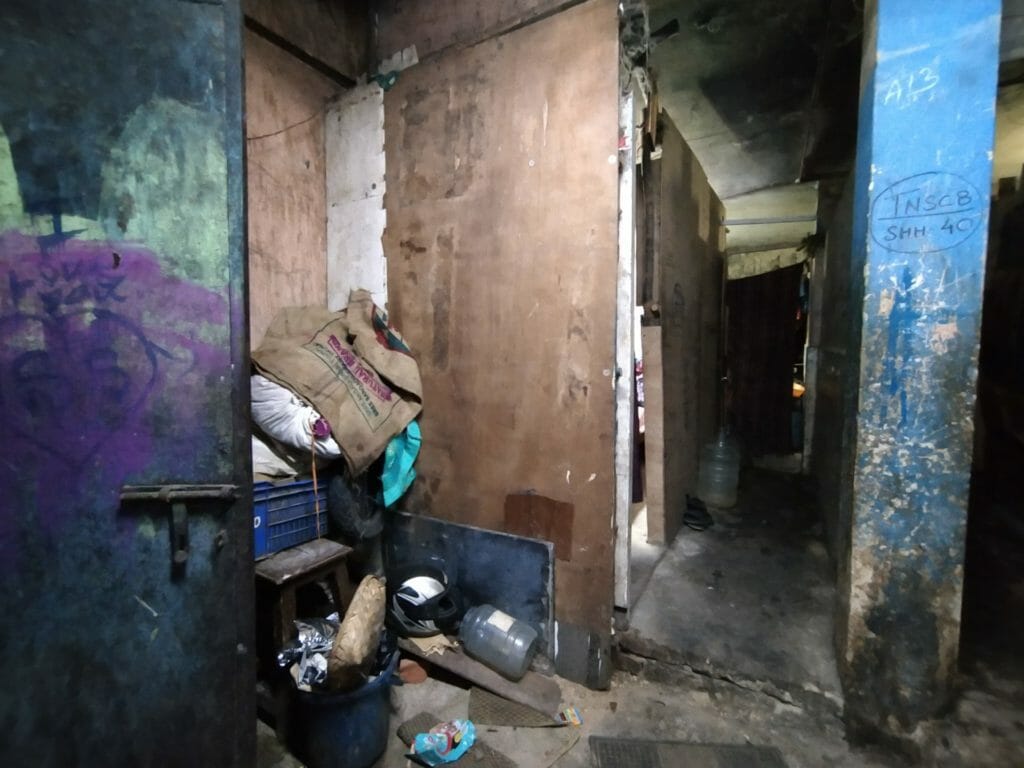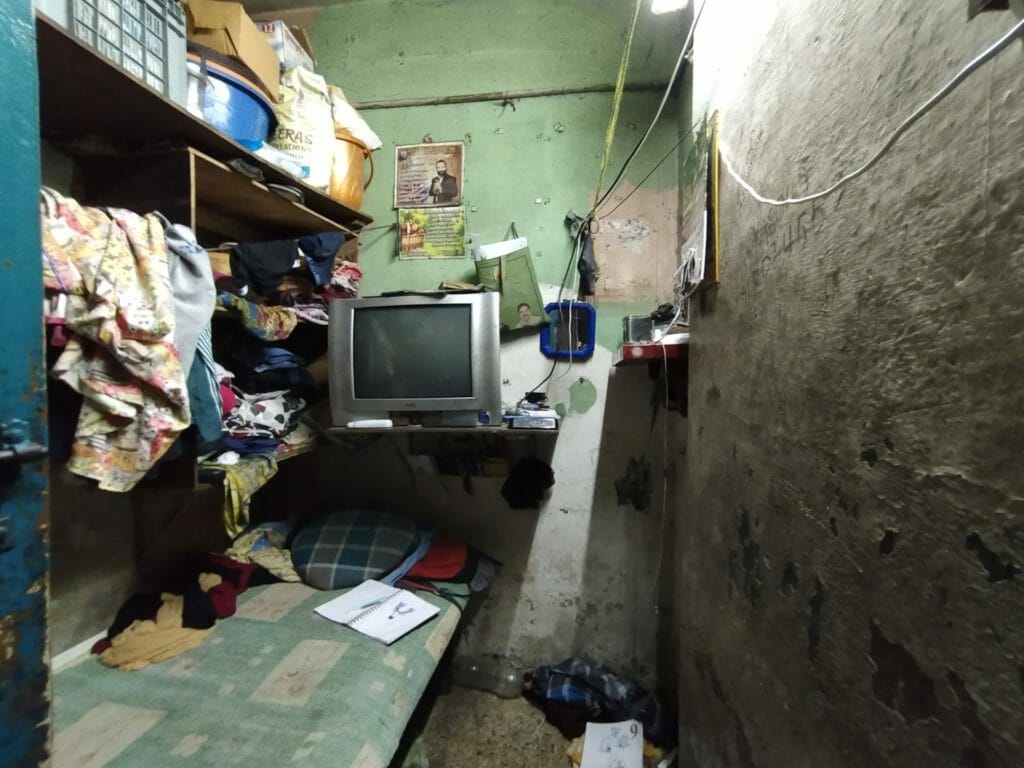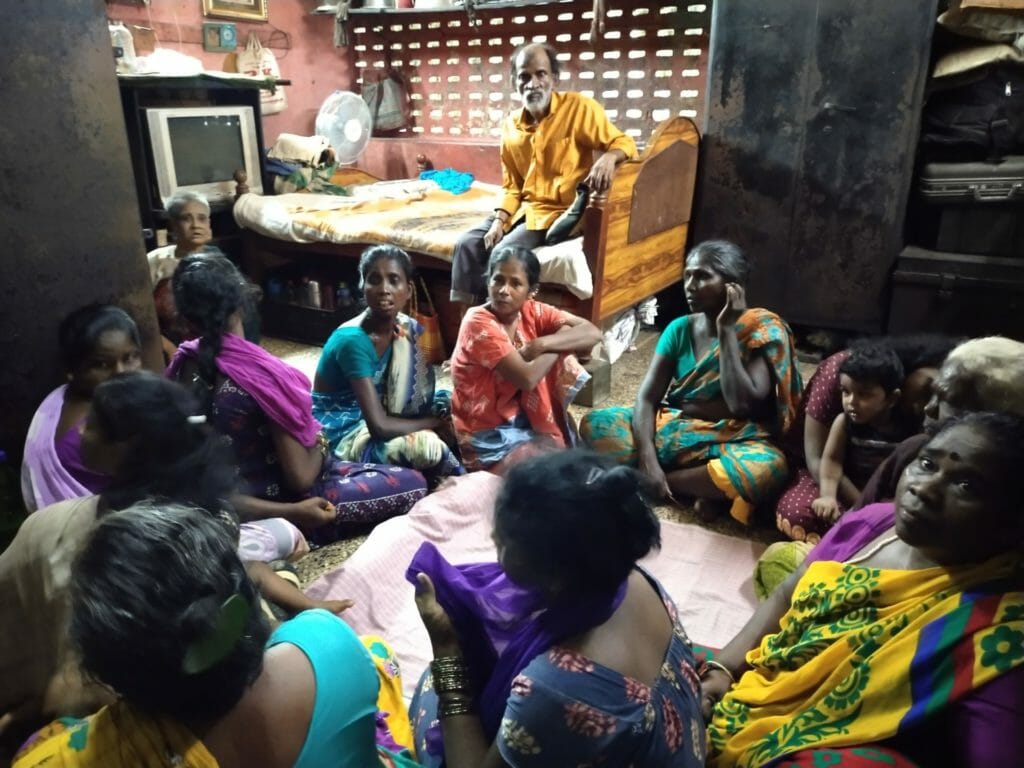“I want a home,” says Dhanashree, a student of Class IX. “It should have a toilet with a door, at least one room spacious enough to stretch my legs and sleep and a kitchen of our own,” she adds. This is not just her dream but also that of hundreds of families in Kannappar Thidal who were evicted from the streets near Ripon Building two decades ago.
Evictions in Chennai have become a common affair now with removal of encroachments, eminent domain claims, court orders and developmental projects being cited as reasons by various government bodies to carry out the process.
Many families have been moved from places of residence where they have spent decades, only to find themselves either in the outskirts of the city or in limbo, like those who live in Kannappar Thidal. Evictions displace residents and upend their lives in unimaginable ways, yet there is little attention paid by the authorities to what happens to those who are subjected to it once they are out of sight.
Read more: Life beyond the murals in Chennai’s Kannagi Nagar
Kannappar Thidal residents on unmet promises
Less than a kilometre from Chennai’s bustling Central Railway Station and the seat of the civic body, the Ripon Building, is the world-class Jawaharlal Nehru Stadium, an important landmark of Chennai. Close to the Indoor Stadium Campus is a commercial complex which has an alley on its side, that takes us to a very different reality from these imposing structures.
Around 62 families, who once lived on the streets near Ripon building, were evicted in 2002 by the Greater Chennai Corporation as their presence was found to be an obstacle to ongoing sporting events and developmental work in the stadium.
Promised a dwelling unit in a government tenement in three months’ time, the families were placed in a building originally used to house load-men working in the nearby Southern Railways goods shed. What was supposedly a temporary arrangement turned out to not be so. As a result, these families continue to reside in the same building twenty years after the eviction.
Selvam, 50, lived with his family on the streets of Raja Muthiah Salai for decades. They made ends meet by taking up any daily wage jobs that came their way. In 2002, the civic body evicted them promising to provide an alternative dwelling arrangement in Jutkapuram within three months.
“A private apartment has come up in the same place in Jutkapuram where they promised to build us houses. Even when the foundation stone was laid for the construction of the housing units in KP Park, the then-elected representatives and the officials promised us to provide the houses there. Two decades have passed, governments have changed, delimitations have been carried out and 62 families have multiplied into 128 over the years with those who came here as children becoming adults and starting their own families, yet, we live in the same dilapidated building that could collapse at any time,” he says.
Abysmal living conditions in Kannappar Thidal
At the entrance of the alley, a family of three members, a mother, daughter and the father, were found to be sitting on a cot and a stool with a tarpaulin sheet serving as their roof. “This is our home,” they say.
Children, who were still dressed in school uniforms after school hours, were seen fetching water from a tap in plastic pots. All along the alley are small hutments made of makeshift materials like plywood and tarpaulin sheets. These structures have been erected by families who do not have adequate room in the original building that housed the residents after eviction.
At the end of the alley is the building that is meant to be a home for those made homeless by the state. Pointing to a small room in the building that has a screen for a door and space only to accommodate a small iron cot, Selvam says, “This is home to five people that includes four adults and one child.”
A small hall in the same building houses more families. “Eight families live in this single room,” says Mariamma. “We can cook only after one family finishes cooking. We can change clothes only when men in the family go out. There are no toilets or bathrooms here. So, we use a corner of the house which is an open space to take bath,” she says.
The women in the locality also complain that many children were frequently falling ill as the sanitary conditions were very poor. There is no official system of garbage collection for the area.
The residents also mention that during monsoons the rainwater seeps through the cracks in the building rendering them unable to sleep or use the space for days. The poor structural integrity of the building has left the residents in fear of its imminent collapse.

Social issues in Kannappar Thidal
Women of Kannappar Thidal face additional burdens.
Aishwariya, a student of Class IX says, “It is very difficult to live here when you are on your period. We have to use the open space behind the building to urinate. Since many outsiders come in here to involve in anti-social activities, it is not safe to go alone.”
Notably, the lack of sufficient space also forces many young girls and boys into early marriage. By the time they turn 18, most women are married and have at least one child. Since the parents find it difficult to accommodate their children in the limited space they have, they prefer having them move out after marriage.
Despite being educated, many young men find themselves unable to land proper jobs. These young men, who cannot take care of their families, either turn into addicts or die by suicide.
“Many of the women here are widows. We go to nearby market areas to sell flowers and garlands. We earn around Rs 100 to Rs 150 per day with which we make do,” says Mariamma.
The only use the residents see for the proof of residence they have attached to this location is the ability to avail of basic groceries through the public distribution system (PDS) and the chance to vote.
“The politicians, be it from any party, make poll promises to build us new houses. However, in 20 years, nothing has changed for us,” say the residents of Kannappart Thidal.
Read more: Eviction in Govindasamy Nagar highlights precarious life of Chennai’s poor
Promise of change
The only glimmer of hope those in Kannappar Thidal have had in recent years has been an enumeration exercise that was undertaken eight months ago after a visit by the officials along with the elected representative of the area.
I Paranthamen, MLA of Egmore, says, “After winning the election, I arranged for joint meetings with Tamil Nadu Urban Habitat Development Board (TNUHDB) and civic body officials and visited the location with them. There are many more street dwellers even in the surrounding locality. As many as 484 families, including over 100 families from Kannapar Thidal alone, have been enumerated so far across different streets in the constituency. We are planning to build houses for all of them in the same place and the process is underway.”
A biometric enumeration of Kannapar Thidal residents was held on September 28th, shortly after we spoke to the MLA.
Over the years, many officials have been transferred and the ones in charge now are not aware of what led to the inordinate delay of 20 years in providing the residents with decent housing. However, Paranthamen, who acknowledged that both DMK and AIADMK governments have been in power in the past two decades and should have remedied this, says, “I am not aware of what measures were taken in the past by either of the governments but I am determined to ensure these residents get proper houses.”
On the initiative to take biometric enumeration, Vanessa Peter, founder of the Information and Resource Centre for the Deprived Urban Communities (IRCDUC, says “It is a gross violation of human rights to make the evicted people stay in a shelter for nearly two decades. It is a welcome move that the government has now looked into their issue and is planning to provide housing for them. However, they should also ensure the housing is provided within the vicinity to ensure their right to livelihood is being upheld.”
“Eviction is a human problem which has to be settled in a humane manner,” states a submission by the Tamil Nadu Government in the Supreme Court in 2015. However, the reality of the residents of Kannappar Thidal lays bare the callousness of the state in the eviction process, the many unkept promises and the failure to provide livable conditions for the residents.
While the right to shelter has been deemed a fundamental right under the Indian constitution, the long wait of these residents shows that it does not seem to apply to everyone in an unequal city.

